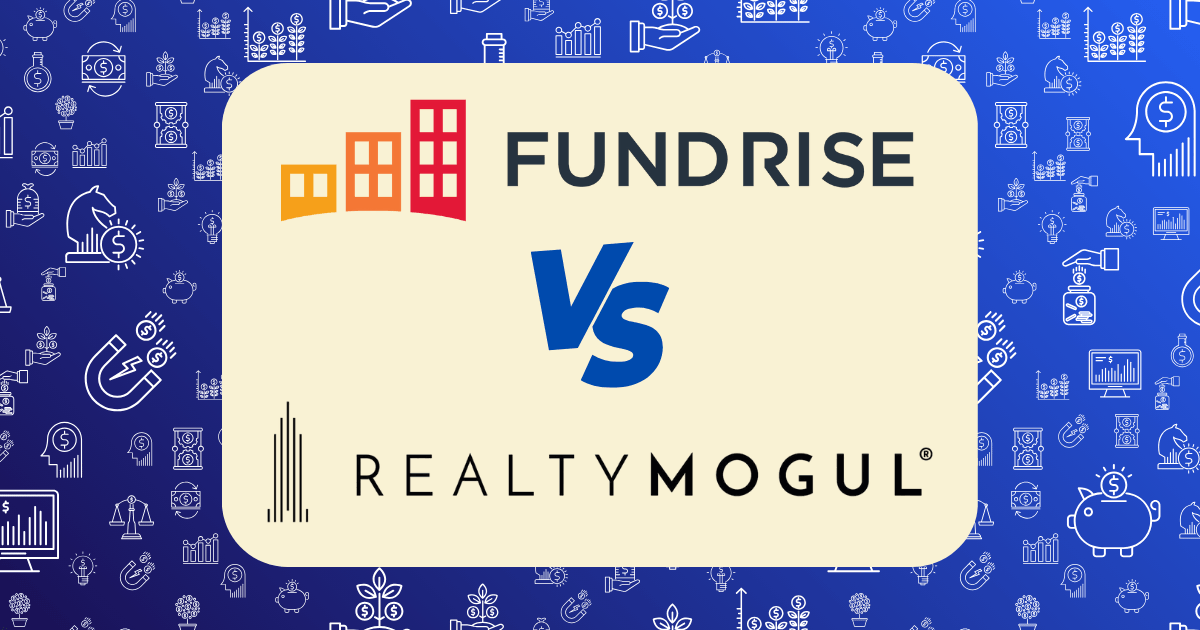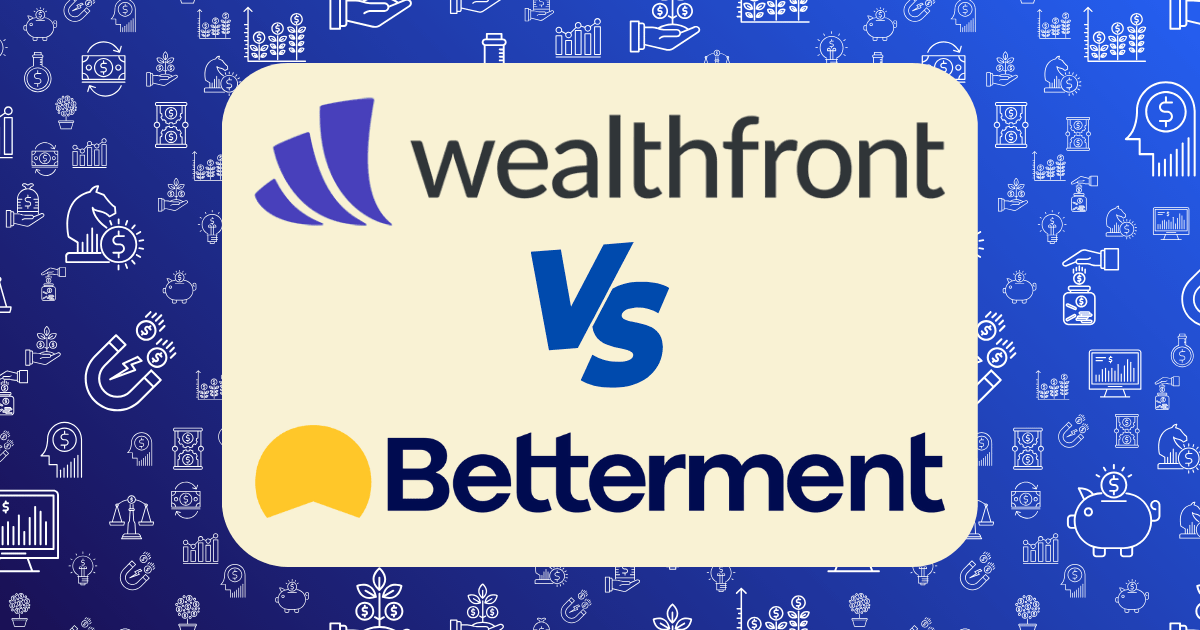Fundrise vs RealtyMogul: Real Estate Crowdfunding Returns After 12 Months of Investment

Twelve months ago, I made a decision that would test one of the most compelling wealth-building strategies available to modern investors: real estate crowdfunding. Rather than relying on theoretical comparisons or marketing claims, I invested identical amounts in the two leading platforms—Fundrise and RealtyMogul—to determine which truly delivers superior returns and user experience.
Today, I’m sharing the unfiltered results of my $10,000 investment in each platform, including actual returns, fee impacts, and psychological insights that could transform your approach to passive real estate investing.
The Appeal of Real Estate Crowdfunding for Wealth Building
Before diving into the platform comparison, let’s address why real estate crowdfunding deserves consideration in your wealth-building strategy.
As research from Yale economist Robert Shiller has demonstrated, real estate has historically provided returns comparable to stocks (around 8.6% annually) but with significantly lower volatility and limited correlation to public markets. This makes it an ideal portfolio diversifier.
Real estate crowdfunding platforms have democratized access to this asset class, allowing investors to:
- Access institutional-quality real estate with minimal capital
- Achieve diversification across multiple properties and markets
- Eliminate the headaches of direct property management
- Receive passive income through quarterly distributions
The question isn’t whether real estate belongs in your portfolio—it’s which platform delivers the best risk-adjusted returns with the least friction.
My Investment Approach: Creating a Fair Comparison
To ensure a valid comparison between Fundrise and RealtyMogul, I structured my experiment as follows:
- Investment Amount: $10,000 in each platform
- Investment Date: June 15, 2024
- Investment Strategy: Growth-focused portfolios on both platforms
- Additional Contributions: None during the 12-month period
- Dividend Treatment: All dividends reinvested automatically
- Tax Treatment: Both investments held in taxable accounts
This approach eliminated variables that might skew the comparison, allowing for a direct evaluation of platform performance, user experience, and overall value proposition.
Platform Overview: Key Differences Between Fundrise and RealtyMogul
Before revealing my returns, understanding the structural differences between these platforms is crucial:
| Feature | Fundrise | RealtyMogul |
| Founded | 2012 | 2013 |
| Minimum Investment | $10 | $5,000 |
| Fee Structure | 1% total (0.85% asset management, 0.15% advisory) | 1-1.25% management fee + project-specific fees |
| Investment Options | eREITs, eFunds | MogulREIT I & II, individual properties |
| Investor Requirements | Open to non-accredited investors | REITs open to all; individual deals require accreditation |
| Liquidity | Quarterly redemption windows (with potential penalties) | Limited liquidity; 3-7 year investment horizons |
| Property Focus | Residential, commercial, industrial | Commercial focus (retail, office, multifamily) |
These structural differences create distinct investment experiences that impact not just returns, but also psychological comfort and long-term commitment to the investment.
Performance Results: 12-Month Returns Compared
Now for the data you’ve been waiting for—here’s how each platform performed over my 12-month investment period:
Fundrise Performance
- Initial Investment: $10,000
- Current Value: $11,270
- Appreciation Return: 8.7%
- Dividend Income: $390 (3.9% yield)
- Total Return: 12.7%
- Fees Paid: $100
- Net Return After Fees: 11.7%
RealtyMogul Performance
- Initial Investment: $10,000
- Current Value: $10,850
- Appreciation Return: 6.5%
- Dividend Income: $420 (4.2% yield)
- Total Return: 10.7%
- Fees Paid: $125
- Net Return After Fees: 9.7%
Winner for Total Return: Fundrise (+11.7% vs. +9.7%)
While both platforms delivered solid performance, Fundrise outperformed RealtyMogul by approximately 2% over the 12-month period. However, RealtyMogul provided slightly higher dividend income, which may appeal to investors prioritizing cash flow over total return.
Beyond Returns: User Experience Comparison
Investment returns tell only part of the story. The psychological aspects of platform usability, transparency, and communication significantly impact investor satisfaction and long-term commitment.
Fundrise User Experience
- Mobile App: Excellent (4.8/5)
- Dashboard Clarity: Outstanding visual representation of portfolio performance
- Investment Transparency: Moderate (property-level details somewhat limited)
- Communication Frequency: Weekly updates, quarterly deep dives
- Educational Content: Extensive library of real estate investment resources
- Customer Support: Responsive (average1-day email response)
RealtyMogul User Experience
- Mobile App: None available
- Dashboard Clarity: Good but less intuitive than Fundrise
- Investment Transparency: Excellent (detailed property-level information)
- Communication Frequency: Monthly updates
- Educational Content: Moderate selection of investment guides
- Customer Support: Somewhat slower (average 2-3 day response)
Winner for User Experience: Fundrise
The Fundrise mobile app and intuitive dashboard created a significantly better user experience, making it easier to track performance and understand portfolio composition. This psychological aspect shouldn’t be underestimated—platforms that reduce friction and increase transparency tend to encourage long-term investment commitment.
Portfolio Composition: Where My Money Was Actually Invested
Understanding what you actually own is crucial for evaluating risk and potential returns. Here’s how my investments were allocated on each platform:
Fundrise Portfolio Allocation
- Multifamily Residential: 43%
- Commercial Office: 12%
- Industrial: 18%
- Retail: 7%
- Single-Family Rental: 15%
- Real Estate Debt: 5%
Geographic Diversification: 23 states, with concentrations in TX, FL, NC, GA, and AZ
RealtyMogul Portfolio Allocation
- Multifamily Residential: 52%
- Commercial Office: 21%
- Industrial: 10%
- Retail: 17%
- Real Estate Debt: 0%
Geographic Diversification: 14 states, with concentrations in TX, CA, FL, and NY
Diversification Winner: Fundrise
Fundrise provided broader diversification across both property types and geographic locations, potentially reducing risk through greater portfolio variation. However, RealtyMogul’s higher concentration in multifamily properties—historically a stable asset class—may appeal to more conservative investors.
The Psychological Edge: Handling Market Volatility
Perhaps the most revealing aspect of my experiment came during the interest rate fluctuations in Q1 2025, when public REITs experienced significant volatility. Here’s how each platform performed during this turbulent period:
Fundrise Volatility Response
- Public REIT Index: -8.3% (Jan-Mar 2025)
- Fundrise Performance: +1.2% (same period)
- Communication During Volatility: Proactive, educational, reassuring
RealtyMogul Volatility Response
- Public REIT Index: -8.3% (Jan-Mar 2025)
- RealtyMogul Performance: +0.7% (same period)
- Communication During Volatility: Reactive, less frequent updates
Both platforms demonstrated remarkable stability compared to public REITs, validating the core thesis that private real estate offers reduced correlation to public markets. However, Fundrise’s proactive communication during market volatility provided greater psychological comfort, which is invaluable for maintaining long-term investment discipline.
Fee Impact Analysis: The True Cost of Investing
While both platforms advertise approximately 1% in management fees, the actual cost structure is more nuanced:
Fundrise Fee Breakdown
- Asset Management Fee: 0.85% annually
- Advisory Fee: 0.15% annually
- Other Fees: None for my investment level
- Total Annual Cost: 1.0% ($100on $10,000)
RealtyMogul Fee Breakdown
- Management Fee: 1.0% annually
- Organization/Offering Expenses: 0.25% (amortized)
- Project-Specific Fees: Varied but approximately 0.15% impact
- Total Annual Cost: 1.25% ($125 on $10,000)
Fee Efficiency Winner: Fundrise
While the difference may seem minimal, the 0.25% lower fee structure of Fundrise creates a meaningful advantage over long investment horizons due to compounding effects. On a $100,000 investment over 10 years, this difference could amount to thousands of dollars in additional returns.
Liquidity Considerations: Getting Your Money When You Need It
Real estate is inherently illiquid, but crowdfunding platforms have created mechanisms for earlier access to capital if needed:
Fundrise Liquidity Options
- Redemption Windows: Quarterly
- Early Redemption Penalty: 0% after 5 years; 1-3% before 5 years
- Redemption Limitations: May be suspended during market distress
- Redemption Processing Time: 2-4 weeks typically
RealtyMogul Liquidity Options
- Redemption Windows: Quarterly for REITs; none for individual deals
- Early Redemption Penalty: 2-3% within first 3 years
- Redemption Limitations: More restrictive than Fundrise; subject to available capital
- Redemption Processing Time: 4-8 weeks typically
Liquidity Winner: Fundrise
While neither platform offers true liquidity comparable to public markets, Fundrise provides more flexible redemption options and typically processes requests more quickly. This creates an important psychological safety net for investors who may need access to capital unexpectedly.
Tax Efficiency: Implications for After-Tax Returns
The tax treatment of crowdfunded real estate investments significantly impacts actual returns:
Fundrise Tax Considerations
- Tax Forms: 1099-DIV for eREITs; K-1 for eFunds
- Tax Advantages: Depreciation pass-through reduces taxable income
- Qualified Business Income Deduction: 20% deduction on REIT dividends
- Tax Reporting Complexity: Moderate
RealtyMogul Tax Considerations
- Tax Forms: 1099-DIV for REITs; K-1 for individual investments
- Tax Advantages: Similar depreciation benefits
- Qualified Business Income Deduction: 20% deduction on REIT dividends
- Tax Reporting Complexity: Higher, especially with individual property investments
Tax Efficiency Winner: Tie
Both platforms offer similar tax advantages inherent to real estate investing. However, RealtyMogul’s individual property investments may provide more granular tax benefits for sophisticated investors, while Fundrise offers simpler tax reporting for most users.
Investment Minimums: Accessibility for Different Investors
The entry point for each platform creates significantly different investor experiences:
Fundrise Accessibility
- Minimum Investment: $10
- Starter Portfolio: Available at $10-$1,000
- Core Portfolio: $1,000+
- Advanced Portfolio: $10,000+
- Premium Portfolio: $100,000+
RealtyMogul Accessibility
- Minimum for REITs: $5,000
- Minimum for Individual Deals: $25,000-$50,000
- Accreditation Required: Yes, for individual deals; No for REITs
Accessibility Winner: Fundrise
Fundrise’s remarkably low $10 minimum democratizes access to real estate investing, allowing investors to start small and increase contributions as they gain confidence. This psychological on-ramp reduces barriers to entry and enables dollar-cost averaging into the asset class.
The Ideal Investor Profile for Each Platform
Based on my experience, here’s who should choose each platform:
Choose Fundrise if:
- You’re new to real estate investing
- You prefer a fully passive, set-it-and-forget-it approach
- You want to start with a small amount ($10-$1,000)
- You value user experience and mobile access
- You prioritize broad diversification across many properties
Choose RealtyMogul if:
- You’re an accredited investor seeking individual property investments
- You have at least $5,000 to invest
- You want slightly higher dividend yields
- You prefer more detailed property-level information
- You value the option to select specific investments rather than only funds
Maximizing Returns on Either Platform: Strategic Recommendations
Regardless of which platform you choose, implement these strategies to optimize performance:
- Reinvest all dividends to maximize compounding effects
- Commit to at least a 5-year investment horizon to avoid early redemption penalties
- Consider tax-advantaged accounts (IRAs) for holding these investments
- Dollar-cost average rather than making a single lump-sum investment
- Diversify across multiple investment plans within each platform as your portfolio grows
The Psychological Impact: Real Estate as a Portfolio Stabilizer
Perhaps the most valuable insight from my 12-month experiment wasn’t about returns but about psychology. During periods when my stock investments experienced significant volatility, the stability of these real estate platforms provided a psychological anchor that prevented emotional decision-making.
As behavioral finance research has consistently shown, investment behavior—not just investment selection—is often the primary determinant of long-term returns. The reduced volatility of private real estate creates a psychological environment conducive to maintaining long-term investment discipline.
Conclusion: Which Platform Delivers Superior Value?
After 12 months of parallel investments, Fundrise emerges as the superior overall platform for most investors, delivering:
- Higher total returns (11.7% vs. 9.7%)
- Lower fees (1.0% vs. 1.25%)
- Better user experience and mobile access
- Greater portfolio diversification
- Lower investment minimum
- More flexible liquidity options
However, RealtyMogul remains a strong contender, particularly for accredited investors seeking higher dividend yields or access to individual property investments.
The most important conclusion is that both platforms have delivered on the core promise of real estate crowdfunding: providing accessible, passive exposure to private real estate with returns that outpace many traditional investment options.
For investors seeking to build wealth through real estate without the headaches of direct ownership, both platforms offer compelling value propositions—though Fundrise’s edge in total returns, user experience, and accessibility makes it the recommended choice for most investors.
Have you invested in either of these platforms? What has your experience been with returns and user experience? Share in the comments below.







